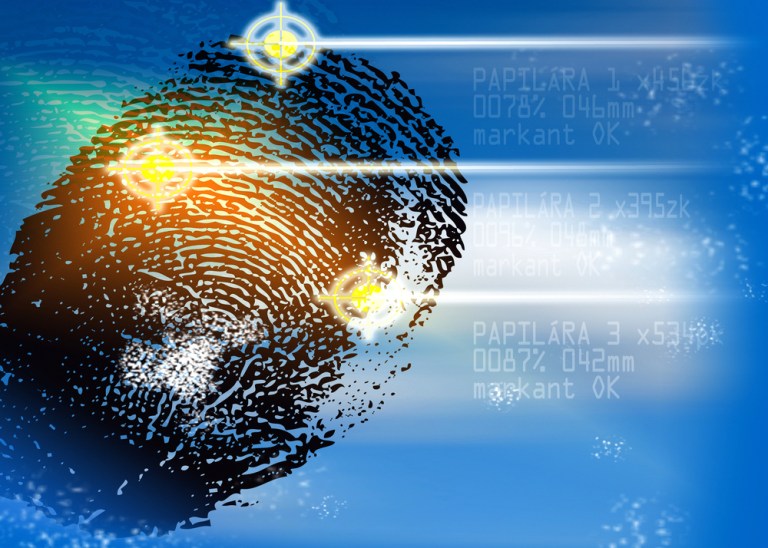
Tap to pay. Dip to pay. Smile to pay. Forget reinventing the payments wheel — it seems many innovators are looking to replace it. As bigger names jump on board with their own biometrics-powered payment methods, the novelty factor seems poised to erode into, simply, the new normal.
The PYMNTS Mobile Point of Sale (mPOS) tracker highlighted Singapore-based mPOS provider Touché for its fingerprint reader, which enables consumers who may have forgotten their phone or wallet at home to pay using something they can’t forget: their finger. By touching the mPOS, the customer identifies themselves as the owner of linked payment cards and credentials.
CEO and Founder Sahba Saint-Claire told PYMNTS that fingerprint images are not stored. Instead, the fingerprint populates a template that is hashed and encrypted on Touché’s database, and card information is tokenized. The device also only talks to their server, changing the encryption key each time the function is used. Saint-Claire said security could help contribute to wider adoption of biometric payment methods, which he believes are the future — but, “It takes some time for some people to feel comfortable,” he said. “There will be a time lag.”
Touché is far from the only one working on payment methods like this. Here are some of the other big industry names venturing into biometrics.
Ingenico
Payment solution provider Ingenico announced a new biotmetric point of sale (POS) terminal last month. It allows customers to authenticate with a fingerprint in support of various payment methods. After the payment is submitted, it requires the fingerprint, which it matches to the database in seconds.
Ingenico said it plans to launch the device in India in June. The country will soon begin to require fingerprint authentication from all citizens. After that, the company plans to expand into the Middle East. It’s also working to enable banks in Mexico to verify loan recipients’ identities using fingerprints.
The company said the feature is all about improving financial inclusion for the unbanked, as well as courting new payment scheme innovations. It predicts that the EMVCo certification of fingerprint authentication could initiate new global schemes.
Despite launching facial recognition before Apple, which later took the spotlight with its Face ID, Samsung is still working to beef up its capabilities in this area. It is reportedly working with Israeli startup Mantis Vision and camera module firm Namuga to integrate 3D sensing software into the camera of its next generation Galaxy S smartphone.
But that’s not the only biometric identifier with which Samsung is playing. It also applied for a patent for a device authentication method that detects users’ blood pressure. According to the patent, “the arterial conduction paths of different users are almost never identical.”
Samsung is reportedly looking into replacing static and hackable PINs and passwords with a one-two authentication combo by pairing users’ unique blood pressure with their unique fingerprints.
The card networks are getting in on the biometric action, too. Mastercard introduced its first biometric card in 2017, combining chip technology with fingerprints to securely verify the cardholder’s identity in store. The customer simply places their finger on the card’s embedded sensor and swipes, dips or taps as usual.
In May, Mastercard announced it is enabling cardholders to self-enroll with its new biometric card. The card has a battery-powered sleeve that scans the cardholder’s fingerprints and encrypts the digital templates for secure storage.
The fingerprint scanner was only half the innovation. Mastercard aimed to make the registration process as easy as possible to encourage adoption. If customers had to go to a bank branch to get fingerprinted, as they did with the first version, it would discourage many from taking the plunge on this cool, but scary, new tech.
Visa announced in January that it had launched pilots of an on-card biometric function for contactless payments. The pilots are with Mountain America Credit Union and Bank of Cyprus, which will be testing the use of fingerprint recognition in lieu of a PIN or signature.
Like Mastercard, Visa’s executives believe “The world is quickly moving toward a future that will be free of passwords, as consumers realize how biometric technologies can make their lives easier,” according to Jack Forestell, head of global merchant solutions for Visa.
Corporate clients of HSBC gained another biometric access point to their banking and financial services in May: facial scan, powered by Apple’s Face ID. The bank already supported Touch ID, voice recognition and Selfie ID for login purposes.
Since corporate users can authorize single payments up to $1 billion on the app, the bank felt it was important to offer additional layers and methods of security, according to Diane S. Reyes, global head of liquidity and cash management.